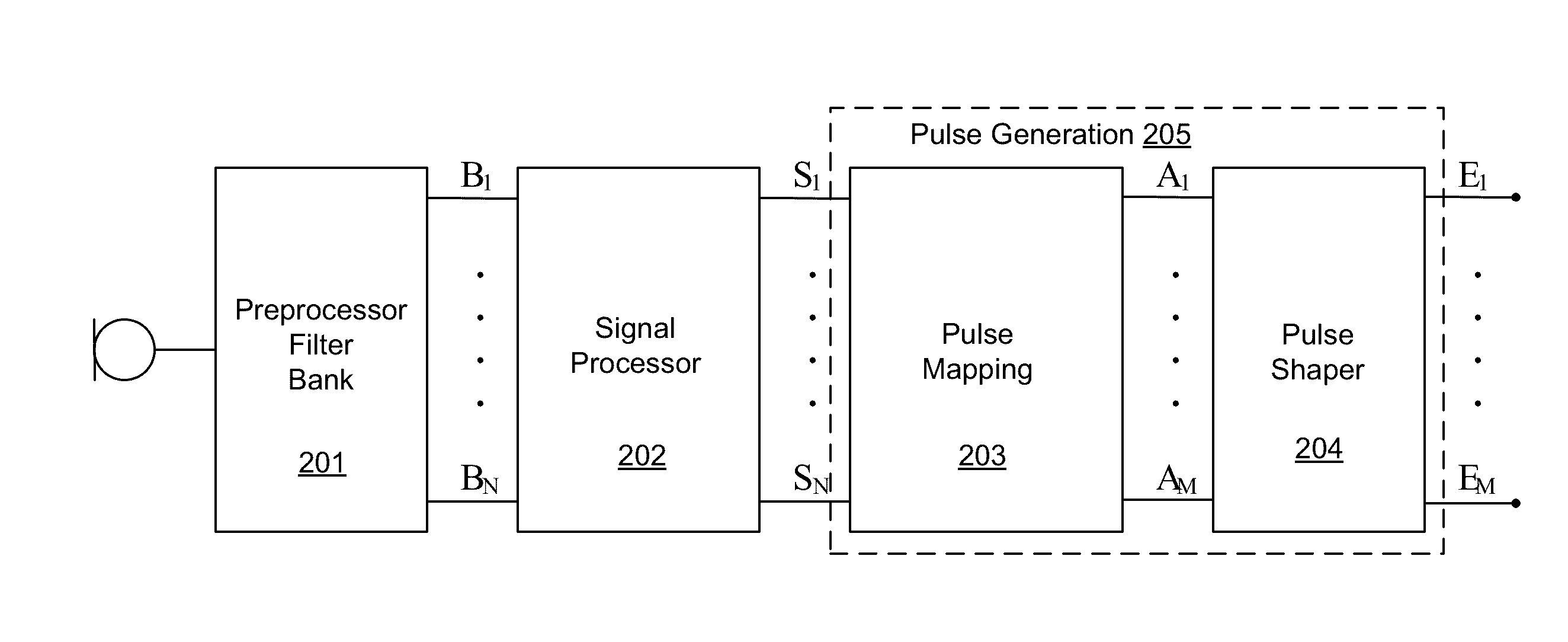Rate and Place of Stimulation Matched to Instantaneous Frequency
a technology of instantaneous frequency and stimulation rate, applied in the field of hearing implant systems, can solve the problems of limited current amplitude, phase duration cannot be arbitrarily short, and fewer electrode channels are available for coding
- Summary
- Abstract
- Description
- Claims
- Application Information
AI Technical Summary
Benefits of technology
Problems solved by technology
Method used
Image
Examples
Embodiment Construction
[0050]Embodiments of the present invention enable an optimal integration of all the different kinds of electrical stimulation cues needed for robust frequency perception: stimulation location, stimulation rate, and stimulation level. In general terms, the stimulation rates are primarily driven by relevant frequency components, especially for low frequencies.
[0051]FIG. 9 shows an example of a frequency percept of 320 Hz elicited by a stimulation rate of 320 pps at a matched stimulation location. Furthermore, a change of an input frequency is translated into a change of stimulation rate and location. FIG. 10 shows how different stimulation rates elicit corresponding frequency percepts when stimulated at individually matched stimulation locations. Because the frequency percept for a fixed stimulation rate and location generally changes as a function of stimulation level, individually mapped functions of stimulation rate and location to perceived frequency will depend on the stimulation...
PUM
 Login to View More
Login to View More Abstract
Description
Claims
Application Information
 Login to View More
Login to View More - R&D
- Intellectual Property
- Life Sciences
- Materials
- Tech Scout
- Unparalleled Data Quality
- Higher Quality Content
- 60% Fewer Hallucinations
Browse by: Latest US Patents, China's latest patents, Technical Efficacy Thesaurus, Application Domain, Technology Topic, Popular Technical Reports.
© 2025 PatSnap. All rights reserved.Legal|Privacy policy|Modern Slavery Act Transparency Statement|Sitemap|About US| Contact US: help@patsnap.com



